Archive for the Amuletos Category
Prece de sete linhas traduzido
Prece de Sete Linhas (Tib. ཚིག་ བདུན་ གསོལ་ འདེབས་ , Wyl. Tshig bdun gsol ‘debs ) também conhecido como Os Sete Versos Vajra.
|
Comentário
Chökyi Drakpa diz:
- HUNG é uma expressão de magnetismo e um meio hábil para invocar a mente de sabedoria dos jñānasattvas .
- O local onde o precioso Mestre tomou nascimento foi no noroeste da terra do Oddiyana. Lá, no Lago Lácteo, onde a água tem as oito qualidades de pureza, ele nasceu sob a forma de uma criança de oito anos no coração de uma flor de lótus . O rei de Oddiyana descobriu que ele estava dotado com as realizações mais maravilhosas e convidou-o para o seu palácio. Como ele nasceu do coração de um lótus , tornou-se conhecido como O Nascido do Lótus. No momento de seu nascimento , ele foi cercado por hostes de dakinis. “Seguindo os passos deste maravilhoso mestre, comprometo a praticar até chegar a seu nível de realização” . Ore para que, assim como ele chegou ao palácio do rei de Oddiyana no passado, ele possa vir agora e lhe dê sua bênção.
- GURU significa mestre . PADMA significa que ele é uma emanação de Amitabha, já que Amitabha pertence à família buddha, a fala do lótus. SIDDHI representa as realizações, e HUNG para a coleta. Assim, em conjunto, significa: “ Reúna as realizações do Mestre de Lótus !”
Sogyal Rinpoche diz:
- Quando você invoca Padmasambhava, você pode fazê-lo recitando a ” Prece de Sete Linhas“, a oração que é mais comumente usada nas tradições Nyingma e Dzogchen.
-
- Quando um discípulo me invoca com devoção de anseio ,
- E com a canção melodiosa da Prece de Sete Linhas,
- Eu sairei imediatamente de Zangdokpalri ,
- Como uma mãe que não pode resistir à chamada de seu filho. [1]
Mipham Rinpoche escreveu: “Esta oração vajra em sete linhas é a mais majestosa de todas as orações para o grande e glorioso de Oddiyana, a essência de todos os vitoriosos dos três tempos. Surgindo como a vibração inerente de ocorrência natural , o som vajra, constitui um grande tesouro de bênçãos e realizações espirituais”.
Em um tesouro escondido, revelado por Jamgön Kongtrul, Padmasambhava diz:
- Bilhões de dakinis de sabedoria juntam-se, como uma só voz ,
- E para assegurar o florescimento dos ensinamentos do mantra secreto,
- Neste mundo, o reino domado por Shakyamuni ,
- Elas me convidaram, com a melodia dessas sete linhas. [2]
Fonte
Zungs
༈ སྐུ་གསུང་ཐུགས་རྟེན་ལ་གཟུངས་འཇུག་འབུལ་ཚེ་ཉེ་བར་མཁོ་བའི་ལག་ལེན་དཔེའུ་སོགས་ཕྱོགས་བསྒྲིགས་བཞུགས།
Here is the Zungs (Mantras) which we are putting inside the Statue and Stupa.
- Karma Kagyu Zung Collection (©Karma Lekshey Ling Institute)
སྐུ་གསུང་ཐུགས་རྟེན་ལ་གཟུངས་འཇུག་འབུལ་བའི་གཟུངས་འཇུག་ཕྱོགས་བསྒྲིགས་བཞུགས།
| No. |
ཁ་བྱང༌།
|
Particulars |
A4 size |
88x58cm
|
| 1 |
འོད་དཔག་མེད།
|
Amitabha |
01 Amitabha | |
| 2 |
ཚེ་དཔག་མེད།
|
Amitayu |
002_Amitayu | 02 Tsezung |
| 3 |
ཙཀྲ་བཅུ་གསུམ།
|
Chakra 13 |
001_Amitabhaa (1) | |
| 4 |
ཆོས་སྐྱོང་འདོད་གསོལ།
|
Chochong & Dodsol etc. (Dharma Protectors and wishing praye). For stupa, we can put in Lion throne. For staute, we can put in lotus flowers level and seat level. |
004_Chochon & Dodsol etc. | 04 Chokyong Dhodsol |
| 5 |
གདུགས་དཀར།
|
Dugkar |
005_Dugkar | 05 Dugkar |
| 6 |
མགོན་དཀར།
|
Gonkar |
006_Gonkar | |
| 7 |
གུ་རུ་རིན་པོ་ཆེ།
|
Guru |
007_Guru | 07 Guru |
| 8 |
འཇམ་དབྱངས་སྨྲ་སེང༌།
|
Jamyang Mraseng |
008_Jamyang Mrasang | |
| 9 |
བྱང་སེམས་སྡོམ་བརྒྱུད།
|
Jangsem Domjun |
009_Jangsem Domjun | 09 Jangsem Domjun |
| 10 | ཀཾ་ཚང་བཀའ་བརྒྱུད་བླ་མ། |
Kagyu Lama (Mainly put on the top side of stupa or statue) |
010_Kagyu Lama | 10 Lama |
| 11 |
ཀརྨ་པ།
|
Karmapa |
011_Karmapa | 11 Karkhyen |
| 12 |
ཕུར་པ།
|
Kilaya |
12 Phurpa | |
| 13 |
དཀོན་མཆོག་རྗེས་དྲན།
|
Konchok Jedren (We can put in Bumpa for stupa and stomach level for statue) |
013_Konchok Jedren | |
| 14 |
ཀུ་རུ་ཀུལླེ།
|
Kuru Kuley |
014_Kuru Kuley | |
| 15 |
ལཀྟྲི་པ་ལ།
|
Loktri Pala |
015_Loktri Pala | |
| 16 |
སྤྱན་རས་གཟིགས།
|
Mani |
016_Mani | 16 Chenrezig |
| 17 |
འཇམ་དབྱངས།
|
Manjushiri |
017_Manjushiri | 17 Jamyang |
| 18 |
སངས་རྒྱས་སྨན་བླ།
|
Medicine Buddha |
018_Medicine Buddha1 | 18 Menzung |
| 19 |
མི་ལ་རས་པ།
|
Mila |
019_Mila | 19 Mila |
| 20 |
རྣམ་རྒྱལ་མ།
|
Namgyalma |
020_Namgyalma | 20 Namgyalma |
| 21 |
རྣམ་འཇོམས།
|
Namjom |
021_Namjom | 21 Namjom |
| 22 |
ཨོཾ་ཨཱཿ་དྷརྨ་མ་ཏི་ཧཱུྃ།
|
Om A Dharma Mati |
022_Om A Dharma Mati | |
| 23 |
ཨོཾ་ཀྵི་ཧེ་ར་ཙ་སརྦ་སིདྡྷི་ཧཱུྃ།
|
Om Ching |
023_Om Ching | |
| 24 |
ཨོཾ་ཨཱཿ་རཏྣ་པུ་ཎྱེ་ཧཱུྃ།
|
Om Radna Puney |
024_Om Radna Puney | |
| 25 |
ཨོཾ་ཏཱ་རེ་ཏུཏྟཱ་རེ་མ་མ་ཨཱ་ཡུར།
|
Om Tarey ma ma Ayu |
025_Om Tarey ma ma Ayu | |
| 26 |
ཨོཾ་བཛྲ་ཨཱ་ཡུ་ཥེ་སྭཱཧཱ།
|
Om Vajra Ayu Khey |
026_Om Vajra Ayu Khey | |
| 27 |
ཨོཾ་བཛྲ་པཱ་ནི་ཧཱུྃ།
|
Om Vajra Pani Hung |
027_Om Vajra Pani Hung | |
| 28 |
ཨོཾ་ཝཱ་གི་ཤྭ་རི་མུཾ།
|
Om Wagi Shori Mum |
028_Om Wagi Shori Mum | |
| 29 |
ཨོཾ་མུ་ནེ་མུ་ནེ་མ་ཧཱ་མུ་ནེ་ཤཱཀྱ་མུ་ན་ཡེ་སྭཱཧཱ།
|
Sakya Muney |
029_Sakya Muney | 29 Sakya Muni |
| 30 |
ཏདྱཐཱ། ཨོཾ་མུ་ནི་མུ་ནི་མ་ཧཱ་མུ་ནི་ཡེ་སྭཱཧཱ།
|
Sakya Muney_1 |
030_Sakya Muney_1 | |
| 31 |
སེང་གདོང་མ།
|
Sing Dhongma |
031_SingDhongma | |
| 32 |
ཨོཾ་སུ་པྲ་ཏིཥྛ་བཛྲ་ཡེ་སྭཱཧཱ།
|
Sutra Tikh Thra |
032_Sutra Tikh Thra | |
| 33 |
སྒྲོལ་མ།
|
Tara |
033_Tara | 33 Drolma |
| 34 |
རྟེན་འབྲེལ་སྙིང་པོ།
|
Tendrel Nyingpo (We can put top and bottom anywhere in stupa and statue) |
034_Tendrel Nyingpo | 34 Tendrel Nyinpo |
| 35 |
སཙྪའི་གཟུངས།
|
Tsa tsa |
035_Tsatsa | |
| 36 |
ཡིག་བརྒྱ།
|
Vajrasattava |
036_Vajrasattava | 36 Yigja |
| 37 |
དབྱངས་གསལ།
|
Yangsel (We can put in the throat level for statue. Neck level for stupa) |
037_Yangsel | 37 Yangsel |
| 38 |
ཀཾ་ཚང་བཀའ་བརྒྱུད་ཀྱི་ཡི་དམ།
|
Yidam (We can put in the chest level of statue. Upper part of the Bumpa of stupa. |
038_Yidam | 38 Yidam |
| 39 |
ཨོཾ་ཛཾ་བྷ་ལ་ཛ་ལེནྡྲཱ་ཡེ་སྭཱཧཱ།
|
Zambhala |
039_Zambhala | 39 Zambhala |
| 40 |
གཟུངས་ཆེན་སྡེ་ལྔ།
|
Zungchen Dhenga (We can put from upper side of thorne to top of stupa. From upper side of lotus flower or seat to head of stutue |
040_Zungchen Dhenga | 40 Zungchen Dhenga |
| 41 |
མ་ཧཱ་ཀཱ་ལ།
|
Mahakala. ( Dharma Protector)
|
041_Mahakala | 41 Gonpo Bernagchen |
| 42 |
འོད་ཟེར་དྲི་མེད་སཙྪའི་གཟུངས་ཁ་དོག་སེར་པོ།
|
Odzer Drimey tsatsa zung (Yellow)
|
042_Tsatsa_Odzer_drimey_99_Yellow | |
| 43 |
གཙུག་ཏོར་དྲི་མེད་སཙྪའི་གཟུངས་ཁ་དོག་དཀར་པོ།
|
Tsuktor Drimey tsatsa zung (white)
|
043_Tsatsa_Tsultor_drimey_108_white | |
| 44 | གཏེར་བུམ་ལ་མཁོ་བའི་གཟུངས་སྔགས། | For Ter Bum | 044_Yangbum | |
| 45 | མར་པ། | Marpa Chokey Lodrey | 45 Marpa | |
| 46 | མི་ལ། བྱང་ཕྱོགས་མུན་པའི་སྨག་རུམ་ན་སོགས། | Praise to Milapa by Naropa | 46 Mila Praise | |
| 47 | ཕྱག་ན་རྡོ་རྗེ། | Chagna Dorje | 47 Chagdor | |
| 48 | གུ་རུ་རྡོ་རྗེ་གྲོ་ལོད། | Dorje Drolo | 48 Guru Drolo | |
| 49 | སོ་ཐར་སྡོམ་རྒྱུན། | Sothar Domjun | 49 Sothar Domjun | |
| 50 | མགོན་པོ་ཕྱག་བཞི་པ། | Four Arm Mahakala | 50 Chagzhipa | |
| 51 | མགོན་པོ་ཕྱག་དྲུག་པ། | Six Arm Mahakala | 51 Chagdrukpa | |
| 52 | ནམ་མཁའ་མཛོད། | Namkha Dzod | 52 Namkha Dzod | |
| 53 | ཉེ་བའི་སྲས་ཆེན་བརྒྱད། | 8 Great Bodhisattavas | 53 8 Great Bodhisattavas | |
| 54 | དྲི་མེད་རྣམ་གཉིས། | Drimey Namnyi | 54 Drime Namnyi | |
| 55 | རིག་པ་ཕུག་རོན། | Rigpa Phugron | 55 Rigpa Fugron |
-
Drukpa Kagyu (Mantras) Zung collection to put inside the Statue and Stupa.
དཔལ་ལྡན་འབྲུག་པ་དཀར་བརྒྱུད་ལུགས་ཀྱི་སྐུ་གསུང་ཐུགས་རྟེན་ལ་འབུལ་བའི་གཟུངས་འཇུག་ཕྱོགས་གཅིག་ཏུ་བསྒྲིགས་པ་བཞུགས།
(Many thanks to Lopon Lungrig from (Sangye Choling) Budha Dharma Center, Kathmandu Nepal.) Zung collection_Drukpa Kagyu
Zung collection_Drukpa Kagyu
-
Introduction of how to put the Mantra rolls into the Statue and Stupa by Jamgon Kongtrul
རྟེན་ལ་ནང་གཞུག་འབུལ་བའི་ལག་ལེན་ལུགས་སྲོལ་ཀུན་གསལ་དྲི་བྲལ་ནོར་བུ་ཆུ་ཤེལ་གྱི་མེ་ལོང་ཞེས་བྱ་བ་དང༌། གནོད་སྦྱིན་ལྷ་མང་གི་འཁྲུལ་འཁོར་བཅའ་སྒྲུབ་ཀྱི་ལག་ལེན་རྣམ་གསལ་དུ་བཀོད་པ་རིན་ཆེན་རྫིང་བུ་ཞེས་བྱ་བ་བཞུགས།
![]()
N0007_about Chodten N0007_Chorten instruction
![]()
P0030_gnod sbyin lha mang gi ‘khrul ‘khor bca’ sgrub kyi lag len P0030_gnod sbyin lha mang gi ‘khrul ‘khor bca’ sgrub kyi lag len
- སྐུ་གསུང་ཐུགས་རྟེན་ལ་གཟུངས་འཇུག་འབུལ་ཚེ་ཉེ་བར་མཁོ་བའི་འཁོར་ལོ་སོགས་ཕྱོགས་བསྒྲིགས་བཞུགས།
- གནོད་སྦྱིན་ལྷ་མང་ཡབ་ཡུབ་འཁོར་ལོ་བཞུགས།gnod sbyin lha mang yab yum khorlo
- བཀྲ་ཤིས་གཏེར་བུམ་འཁོར་ལོ་བཞུགས།bkras rtags brgyad ‘khor lo
- བཀྲ་ཤིས་རྟགས་བརྒྱད་བཞུགས།bkras rtags brgyad
- གནམ་ཆོས་མི་འགྱུར་རྡོ་རྗེའི་དགོངས་གཏེར་ལས་དགེ་འདུན་མཐུན་པའི་འཁོར་ལོ་དང༌། དགེ་འདུན་བསྡུ་བའི་འཁོར་ལོ་བཞུགས།dge ‘dun bsdu ba dang mthun pa’i ‘khor lo
- སྐུ་གཟུགས་མཆོད་རྟེན་ཆེན་པོ་ལ་མཁོ་བའི་གཟུངས་ཕྱོགས་བསྒྲིགས།
བླ་མ། ཡི་དམ། ཆོས་སྐྱོང་འདོད་གསོལ། གཟུངས་ཆེན་སྡེ་ལྔ།24×36 inches_Zungchen Denga-Lama-Yidam-Choechong
- ༄༅། །གདན་ས་དཔལ་སྤུངས་ཤེས་རབ་གླིང་དུ་བཞུགས་པའི་སྐུ་གཟུགས་ཀྱི་རྟེན་ལ་བཞུགས་སུ་གསོལ་བའི་གསར་རྙིང་གི་གཟུངས་རྣམས་ཕྱོགས་གཅིག་ཏུ་བསྒྲིགས་པ་བཞུགས
༄༅། །གདན་ས་དཔལ་སྤུངས་ཤེས་རབ་གླིང་དུ་བཞུགས་པའི་སྐུ་གཟུགས་ཀྱི་རྟེན་ལ་བཞུགས་སུ་གསོལ་བའི་གསར་རྙིང་གི་གཟུངས་རྣམས་ཕྱོགས་གཅིག་ཏུ་བསྒྲིགས་པ་བཞུགས།
|
རྙིང་མའི་གཟུངས་ཕྱོགས་བསྒྲིགས།
|
གསར་མའི་གཟུངས་ཕྱོགས་བསྒྲིགས།
|
| 01_Nyingma Zung_ka
༡༽ བླ་སྒྲུབ་ཐུགས་ཐིག་གི་བརྒྱུད་པ། ༢༽ རྫོགས་ཆེན་སྙིང་ཐིག་ཆེན་མོའི་བརྒྱུད་པ། ༣༽ ཨ་ཏི་ཟབ་དོན་སྙིང་པོའི་བརྒྱུད་པ། ༤༽ སེམས་སྡེའི་བརྒྱུད་པ།
02_Nyingma Zung_kha ༡༽ འདུས་པ་མདོའི་དབང་གི་བརྒྱུད་པ་ལ་བསྐྱེད་རྫོགས་གསུམ་ལས་དང་པོ་ཨ་ཏིའི་བརྒྱུད་པ། ༢༽ གསུམ་པ་མ་ཧཱ་ཡོ་གའི་བརྒྱུད་པ། ༣༽ སྒྱུ་འཕྲུལ་ཞི་ཁྲོའི་དབང་གིི་བརྒྱུད་པ། ༤༽ སྙིང་པོའི་བཤད་བཀའི་བརྒྱུད་པ།
03_Nyingma Zung_ga ༡༽ སངས་རྒྱས་མཉམ་སྦྱོར་གྱི་བརྒྱུད་པ། ༢༽ ཡང་དག་གི་བརྒྱུད་པ། ༣༽ འཇམ་དཔལ་གཤིན་རྗེའི་གཤེད་དམར་པོའི་བརྒྱུད་པ། ༤༽ རྟ་མགྲིན་ཡང་གསང་ཁྲོས་པའི་བརྒྱུད་པ།
04_Nyingma Zung_nga ༡༽ ཀླུ་སྒྲུབ་ལུགས་ཀྱི་སེམས་བསྐྱེད་ཀྱི་བརྒྱུད་པ། ༢༽ སེམས་བསྐྱེད་ལུགས་གསུམ་ཆུ་བོ་གཅིག་འདྲེས་ཀྱི་བརྒྱུད་པ། ༣༽ དེར་མ་ཆུད་པའི་བོད་འདིར་བཀའ་དྲིན་ཆེ་བའི་སྔ་འགྱུར་གྱི་ལོ་ཙཱ་བ་རྣམས་ཀྱི་མཚན། ༤༽ གཏེར་སྟོན་གཙོ་ཆེ་བ་འགའི་མཚན།
05_Nyingma Zung_ca ༡༽ གཏེར་གསར་བླ་སྒྲུབ་ཐུགས་ཐིག་གི་སྔགས། ༢༽ བླ་མ་གསང་འདུས་ཀྱི་སྐུ་གསུམ་སྒྲུབ་པའི་སྔགས། ༣༽ མ་ཧཱ་གུ་རུ་དྲག་པོར་སྒྲུབ་པའི་སྔགས། ༤༽ ཉང་གི་དྲག་པོ་བདེ་འདུས་ཀྱི་སྔགས།
06_Nyingma Zung_cha ༡༽ ཡང་ཟབ་རྫོགས་པ་ཆེན་པོའི་རྒྱུད་བཏགས་གྲོལ་གྱི་སྐོར། ༢༽ འབྲས་བུ་ཡོངས་རྫོགས་ཆེན་པོའི་རྒྱུད། ༣༽ གཞན་གྱི་དོན་ཆེན་བྱ་བའི་སོགས། ༤༽ སྙིང་ཐིག་གི་བཏགས་གྲོལ།
07_Nyingma Zung_ja ༡༽ རྒྱུད་ཀྱི་རྒྱལ་པོ་ཆེན་པོ་རྡོ་རྗེ་བཀོད་པ་ཀུན་འདུས་རིག་པའི་མདོའི་སྔགས། ༢༽ ན་རག་དོང་སྤྲུགས་ཀྱི་སྔགས། ༣༽ སྒྱུ་འཕྲུལ་གསང་བ་སྙིང་པོའི་སྔགས། ༤༽ སངས་རྒྱས་ཐམས་ཅད་མཉམ་པར་སྦྱོར་བའི་རྒྱུད་སྔགས།
08_Nyingma Zung_nya ༡༽ བདེ་གཤེགས་འདུས་པ་ཞི་བ་དམ་པ་རིགས་བརྒྱའི་སྔགས། ༢༽ བདེ་འདུས་ཁྲོ་བོ་རོལ་པའི་སྔགས་ལས་དང་པོ་ཆེ་མཆོག་ཡོན་ཏན་གྱི་ལྷ་ཚོགས་རྣམས་ཀྱི་སྔགས་སོགས། ༣༽ ལྔ་པ་ཕུར་པ་ཕྲིན་ལས་ཀྱི་ལྷ་ཚོགས་ཀྱི་སྔགས་སོགས། ༤༽ བརྒྱད་པ་འཇིག་རྟེན་མཆོད་བསྟོད་ཀྱི་སྔགས།
09_Nyingma Zung_ta ༡༽ ཆོས་དབང་གི་ཡང་དག་སྙིང་པོའི་སྔགས། ༢༽ གཤིན་རྗེ་རུ་མཚོན་དམར་པོའི་སྔགས། ༣༽ ཐུགས་རྗེ་ཆེན་པོ་བདེ་གཤེགས་འདུས་པའི་སྔགས། ༤༽ རྟ་མགྲིན་ནཱ་ག་ཀླུ་འདུལ་གྱི་སྔགས།
10_Nyingma Zung_tha ༡༽ ཕྱག་རྡོར་དྲེགས་འདུལ་གྱི་སྔགས་ཀྱི་རིམ་པ། ༢༽ བྱང་ཆུབ་གླིང་པའི་ཕྱག་རྡོར་གྱི་སྔགས། ༣༽ ལོཀྟྲི། ༤༽ འཁོར་ལོ་འབར་བ།
11_Nyingma Zung_da ༡༽ མཆོད་པའི་སྤྲིན་གྱི་སྔགས། ༢༽ མཆོད་སྤྲིན་འབྱུང་བའི་སྔགས། ༣༽ ཧེ་རུ་ཀ་གལ་པོོའི་བརྟག་པ་བདུན་པ་ལས་གསུངས་པ་ཐང་སྐུའི་རྒྱབ་ཏུ་འབྲི་བའི་སྐུ་གསུང་ཐུགས་བྱིན་གྱིས་རློབ་པའི་སྔགས། ༤༽ ཨོཾ་བཛྲ་ཀུ་ཤ་སོགས།
12_Nyingma Zung_na ཆོས་སྐྱོང་གི་སྔགས་རྣམས་བཞུགས།
13_Nyingma Zung_pa ༡༽ བཅོམ་ལྡན་འདས་དཔལ་བདེ་མཆོག་གི་སྙིང་པོ། ༢༽ ཀྱཻ་རྡོ་རྗེའི་རྩ་སྔགས། ༣༽ གསང་འདུས་སུ་གསུངས་པའི་ཁྲོ་བོ་དགུའི་སྔགས། ༤༽ དུས་ཀྱི་འཁོར་ལོའི་རྐང་པ་བཅུ་དྲུག་པ།
14_Nyingma Zung_pha གཟུངས་ཆེན་སྡེ་ལྔ།
15_Nyingma Zung_ba ༡༽ རྟ་མགྲིན་ཇོ་བོ་ལུགས་ཀྱི་སྔགས་སོགས། ༢༽ ཕྱག་ན་རྡོ་རྗེའི་སྙིང་པོ་སོགས། ༣༽ འཕགས་པ་སོ་སོར་འབྲང་མའི་སྔགས་སོགས། ༤༽ འཕགས་པ་འོད་ཟེར་ཅན་གྱི་གཟུངས་སོགས།
16_Nyingma Zung_ma ༡༽ དཀོན་མཆོག་གསུམ་ལ་ཕྱག་འཚལ་ཞིང་སྐྱབས་སུ་འགྲོ་བ། ༢༽ ན་མོ་བྷ་ག་བ་ཏེ་སོགས། ༣༽ དོན་ཞགས་ཀྱི་གཟུངས། ༤༽ སྤྱན་རས་གཟིགས་མགྲིན་པོ་སྔོན་པོའི་གཟུངས།
17_Nyingma Zung_tsa ༡༽ ཤེར་སྙིང་སཾསྐྲྀ་ཏའི་སྐད། ༢༽ སྤྱན་རས་གཟིགས་བཅུ་གཅིག་ཞལ་གྱི་གཟུངས། ༣༽ སྒོ་མཐའ་ཡས་པའི་གཟུངས། ༤༽ ཚངས་པའི་སྔགས་སོགས།
18_Nyingma Zung_tsha དབྱངས་གསལ་དང་རྟེན་སྙིང༌།
19_Nyingma Zung_dza ༡༽ མཆོད་རྟེན་གྱི་བང་རིམ་དང་སྐུ་གཟུགས་ཀྱི་སྨད་གཟུངས་མདོ་སྡེའི་གཟུངས་སྔགས་ཀྱི་སྡེ། ༢༽ ཏིང་ངེ་འཛན་རྒྱལ་པོ་གཟུང་བར་འགྱུར་བ། ༣༽ ཕ་རོལ་ཏུ་ཕྱིན་པ་དྲུག་གི་སྙིང་པོ། ༤༽ གསེར་ཐུབ།
20_Nyingma Zung_Tashi ༡༽ ཕུན་སུམ་ཚོགས་པ་སོགས། ༢༽ ཆེ་བའི་ཆེ་མཆོག་སོགས། ༣༽ སེམས་ཅན་གང་དག་སོགས། ༤༽ ཉིན་མོ་བདེ་ལེགས།
21_Nyingma Zung_Ke-ched སྲོག་ཤིང་བརྟན་པའི་གཟུངས་སྨོན་ལམ་སོགས།
|
01_Sarma Zung_Tsuktor Drimed
གཙུག་ཏོར་དྲི་མེད་གཟུངས་རྒྱས་པ།
02_Sarma Zung_Odzer Drimed འོད་ཟེར་དྲི་མ་མེད་པ་རྣམ་པར་དག་པའི་འོད་ཅེས་བྱ་བའི་གཟུངས།
03_Sarma Zung_Namgyalma རྣམ་རྒྱལ་མའི་གཟུངས།
04_Sarma Zung_Sokshing སྲོག་ཤིང་གི་གཟུངས་ཕྱོགས་བསྒྲིགས།
05_Sarma Zung_Tenbu བསྟན་པ་བུ་གཅིག་གི་རྒྱུད་གསེར་གྱི་སྙིང་པོ་ཉི་མ་རབ་ཏུ་སྣང་བྱེད།
06_Sarma Zung_Rigzin Deje རིག་འཛིན་རྣམ་བཞིའི་ཞལ་ཆེམས་འདས་རྗེས་ཀྱི་ཡི་གེ།
07_Sarma Zung_Images བཀྲ་ཤིས་རྫས་བརྒྱད། རྟགས་བརྒྱད་སོགས་ཀྱི་རི་མོ་དང༌། དྲི་མེད་རྣམ་གཉིས་ཀྱི་དཀྱིལ་འཁོར།
08_Sarma Zung_Odzer Drimed Gyapa འོད་ཟེར་དྲི་མེད་ཀྱི་གཟུངས་རྒྱས་པ།
09_Sarma Zung_Gyaltsan Tsemo འཕགས་པ་རྒྱལ་མཚན་གྱི་རྩེ་མོའི་དཔུང་རྒྱན་ཅེས་བྱ་བའི་གཟུངས།
10_Sarma Zung_Lama & Yidam ༡༽ ལམ་ཟབ་མོ་བླ་མ་མའི་རྣལ་འབྱོར་གྱི་བརྒྱུད་པ། ༢༽ དཔལ་ཀྱཻ་རྡོ་རྗེ་མན་ངག་ལུགས་ཀྱི་བརྒྱུད་པ། ༣༽ ཀྱེ་རྡོར་འགྲེལ་པ་ལུགས་ཀྱི་བརྒྱུད་པ། ༤༽ ཀྱེ་རྡོར་མཚོ་སྐྱེས་ལུགས་ཀྱི་བརྒྱུད་པ། ༥༽ ཀྱེ་རྡོར་ནག་པོ་ལུགས་ཀྱི་བརྒྱུད་པ།
11_Sarma Zung_Yidam ༡༽ བདེ་མེད་མ་ལྷ་མོ་བཅོ་ལྔའི་བརྒྱུད་པ། ༢༽ གུར་རིགས་བསྡུས་ཀྱི་བརྒྱུད་པ། ༣༽ སཾ་པུ་ཊ་རྡོར་དབྱིངས་ཀྱི་བརྒྱུད་པ། ༤༽ དཔལ་དུས་འཁོར་ས་ལུགས་ཀྱི་དབང་བརྒྱུད། ༥༽ དཔལ་འཁོར་ལོ་བདེ་མཆོག་ལཱུ་ཧི་པའི་བརྒྱུད་པ།
12_Sarma Zung_Yidam ༡༽ བདེ་མཆོག་དྲིལ་བུ་པའི་བརྒྱུད་པ། ༢༽ བདེ་མཆོག་ནག་པ་པའི་བརྒྱུད་པ། ༣༽ མཁའ་འགྲོ་རྒྱ་མཚོའི་དབང་གི་བརྒྱུད་པ། ༤༽ ས་ཕུར་གྱི་བརྒྱུད་པ། ༥༽ གསང་འདུས་མི་བསྐྱོད་པའི་བརྒྱུད་པ།
13_Sarma Zung_Yidam ༡༽ རྡོ་རྗེ་འཇིགས་བྱེད་ས་ལུགས་ཀྱི་བརྒྱུད་པ། ༢༽ འཇིགས་བྱེད་རྭ་ལུགས་རོ་ལངས་བརྒྱད་བསྐོར་དབང་བརྒྱུད། ༣༽ ཀུན་རིག་གི་བརྒྱུད་པ། ༤༽ སྦྱོང་རྒྱུད་དཀྱིལ་འཁོར་བཅུ་གཉིས་དབང་བརྒྱུད། ༥༽ ཨ་ར་པ་ཙ་ནའི་བརྒྱུད་པ།
14_Sarma Zung_Yidam ༡༽ ཚེ་དཔག་མེད་ཛེ་ཏཱ་རིའི་དབང་བརྒྱུད། ༢༽ སྒྲུབ་ཐབས་རྒྱ་མཚོའི་རྗེས་གནང་གི་བརྒྱུད་པ། ༣༽ སེམས་བསྐྱེད་དབུ་མ་ལུགས་ཀྱི་བརྒྱུད་པ། ༤༽ སོ་སོ་ཐར་པའི་སྡོམ་བརྒྱུད། ༥༽ གུར་མགོན་ལྷ་བརྒྱད་ཀྱི་བརྒྱུད་པ།
15_Sarma Zung_Cho-kyong ༡༽ མགོན་པོ་ཞལ་བཞི་པའི་བརྒྱུད་པ། ༢༽ མགོན་དཀར་ཡིན་བཞིན་ནོར་བུའི་རྗེས་གནང་བརྒྱུད་པ། ༣༽ དམ་ཅན་ཆོས་རྒྱལ་ལྷ་བཅུ་གསུམ་གྱི་རྗེས་གནང་བརྒྱུད་པ། ༤༽ གནོད་སྦྱིན་ཟངས་ཀྱི་པེག་རྩེ་ཅན་གྱི་རྗེས་གནང་བརྒྱུད་པ། ༥༽ ཕྱག་ན་རྡོ་རྗེ་དང་རྣམ་སྲས་ཞི་བ་བདེ་བྱེད་ཀྱི་རྗེས་གནང་བརྒྱུད་པ།
16_Sarma Zung_Yangsal དབྱངས་གསལ།
17_Sarma Zung_Yidam ༡༽ ཀྱེ་རྡོ་རྗེ་ལྷ་དགུའི་སྔགས། ༢༽ དུས་ཀྱི་འཁོར་ལོའི་སྔགས། ༣༽ འཁོར་ལོ་བདེ་མཆོག་གི་སྔགས། ༤༽ གསང་འདུས་མི་བསྐྱོད་རྡོ་རྗེ་གཙོ་འཁོར་གྱི་སྔགས། ༥༽ རྣམ་སྣང་སྒྱུ་འཕྲུལ་དྲྭ་བ་གཙོ་འཁོར་གྱི་སྔགས།
18_Sarma Zung_Yidam ༡༽ རྡོ་རྗེ་དབྱིངས་ཀྱི་གཙོ་འཁོར་གྱི་སྔགས། ༢༽ རྣམ་སྣང་མངོན་བྱང་གི་གཙོ་བོ་རྣམ་སྣང༌། ༣༽ འཕགས་པ་དོན་ཡོད་ཞགས་པའི་གཟུངས། ༤༽ བཅུ་གཅིག་ཞལ་ཀླུ་སྒྲུབ་ལུགས་ཀྱི་གཟུངས། ༥༽ རྡོ་རྗེ་རྣམ་འཇོམས་ཀྱི་སྔགས།
19_Sarma Zung_Yidam ༡༽ སོ་སོར་འབྲང་མ། ༢༽ སྟོང་ཆེན་རབ་འབྱམས། ༣༽ རྨ་བྱ་ཆེན་མོ། ༤༽ གསང་སྔགས་རྗེས་འཛིན། ༥༽ བསིལ་བ་ཆེན་མོ།
20_Sarma Zung_Zung-Chen De-Nga ༡༽ གཙུག་ཏོར་རྣམ་རྒྱལ། ༢༽ གཙུག་ཏོར་དྲི་མེད། ༣༽ གསང་བ་རིང་བསྲེལ། ༤༽ བྱང་ཆུབ་རྒྱན་འབུམ། ༥༽ རྟེན་འབྲེལ་སྙིང་པོ།
21_Sarma Zung_Sang-Zung ༡༽ བཅོམ་ལྡན་འདས་ཀྱི་མཚན་བརྒྱ་རྩ་བརྒྱད་པ་གཟུངས་སྔགས་དང་བཅས་པ། ༢༽ སངས་རྒྱས་མཚན་གྱི་རྣམ་གྲངས། ༣༽ རིན་པོ་ཆེ་ཁང་བུ་བརྩེགས་པ་དང༌། ནོར་བུ་བརྩེགས་པའི་གཞལ་མེད་ཁང་དང༌། མཐོང་བ་ལྡོན་ལྡན་ཅེས་བྱ་བའི་གཟུངས། ༤༽ ཆོས་ཐམས་ཅད་ཀྱི་ཡུམ་གྱི་སྔགས། ༥༽ རིན་པོ་ཆེ་ཏོག་གི་སྔགས།
22_Sarma Zung_Sang-Zung ཏད་ཡ་ཐཱ། ཛྭ་ལི་ཛྭ་ལི་ནི་སོགས།
23_Sarma Zung_Cho-kyong ༡༽ རྡོ་རྗེ་གུར་གྱི་མགོན་པོའི་སྔགས། ༢༽ ལས་མགོན་གྱི་བོད་ནད་བསད་གསུམ་ལས། གནོད་སྦྱིན་མོའི་བོད་པ། ༣༽ དཔལ་མགོན་ཞལ་གྱི་སྔགས། ༤༽ ཕྱགས་བཞི་པ་གཙོ་འཁོར་གྱི་སྔགས། ༥༽ ལེགས་ལྡན་དབུས་མའི་སྔགས
24_Sarma Zung_Cho-kyong ༡༽ རྒྱལ་པོ་ཆེན་པོ་རྣམ་ཐོས་སྲས། ༢༽ མདུང་དམར་ཅན་ལས་མཁན་དང་བཅས་པ། ༣༽ མགོན་དཀར་ཡིད་བཞིན་འཁོར་ལོ། ༤༽ མགོན་པོ་བདུན་ཅུ་རྩ་ལྔའི་སྔགས་ཕྱོགས་སྐྱོང་བཅུ། ༥༽ མཆོད་པ་སྤྲིན་གྱི་གཟུངས།
25_Sarma Zung_Tashi མཛད་པ་བཅུ་གཉིས་ཀྱི་བཀྲ་ཤིས།
26_Sarma Zung_Tashi བྱ་བའི་རྒྱུད་ལེགས་པར་གྲུབ་པ་ལས་གསུངས་པའི་བཀྲ་ཤིས་ཚིགས་བཅས་རིང་མོ་སོགས།
27_Sarma Zung_Tashi བཀྲ་ཤིས་ཀྱི་ཚིགས་སུ་བཅད་པ་སོགས།
28_Sarma Zung_Ngo-wa Mon-lam ༡༽ རྡོ་རྗེ་རྒྱལ་མཚན་གྱི་བསྔོ་བ། ༢༽ འཕགས་པ་བཟང་པོ་སྤྱོད་པའི་སྨོན་ལམ། ༣༽ བྱམས་པའི་སྨོན་ལམ་སོགས།
|
|
Many thanks to Lama Sangye Tenzin from TNG to share these document with us which he brought from Palpung Sherabling, Tibet
|
|
|
Note: Page number 4 is missing from 10_Lama & Yidam
|
|
Libertação através do uso – Tagdrol e Sungma
Libertação através do uso (btags grol)
Esses chakras ou “círculos” (Skt. Chakra , Tib. ‘Khor lo ) foram deixados como um legado por Guru Padmasambhava e outros grandes mestres para beneficiar as gerações futuras. Eles são originários de manuscritos antigos ou blocos de impressão.
1. Libertação através do uso, Tag Drol (btags grol gyi ‘khol lo) .
Estes chakras são colocados no topo da cabeça ou no centro do coração de uma pessoa moribunda para criar conexão kármica positiva e uma possibilidade de libertação durante o estado intermediário (bardo) e a próxima vida.
- Chakra de Liberação Através do Uso descoberto por Terchen Karma Lingpa
- Chakra de Liberação Através do Uso descoberto por Rigdzin Jigme Lingpa
- Chakra de Liberação Através do Uso descoberto por Terchen Tsasum Lingpa
- Chakra de Avalokiteshvara, tesouro redescoberto de Jamyang Khyentse Wangpo
2. Círculos de proteção, Sungma (srung ba’i ‘khor lo) .
Usar estes chakras em seu corpo protege contra obstáculos e doenças infecciosas, aumenta a longevidade e pacifica influências negativas. Sua função específica depende da divindade associada ao diagrama.
- Chakra de Dakini Face de Leão
- Chakra # 1 de Tara Parassol Branco
- Chakra # 2 de Tara Parassol Branco
- Chakra # 3 de Tara Parassol Branco
- Chakra de 21 Taras
- Chakra Donyod Khorlo
- Chakra de Guru Irado
- Chakra de Tara Sosor Drangma
Você pode baixar essas fotos gratuitamente. Se você tiver outras reproduções de btags grol , pode enviá-las para nós, e as adicionaremos à galeria.
Dzi
To Tibetans and other Himalayan people, the dZi is a “precious jewel of supernatural orign” with great power to protect its wearer from disaster. The Tibetan people believe dZi beads are spiritual stones fallen from Heaven which bring good karma to those who own them. The ancient Dzi absorbs cosmic energy from the universe. Tibetans generally believe that dZi beads are of divine origin and therefore not created by human hands. Some say they are dropped by the Gods to benefit those who have the good fortune to find them. Since they are believed to have a divine source, they are considered to be a very precious and powerful amulet. Beads can often be seen in Tibetan temples adorning the most revered statues and sacred relics. They are thought to bring good fortune, ward off evil, and protect the wearer from physical harm and illness. It has even been claimed by Tibetan refugees, that they protect the wearer from knife and bullet attacks!
- Tibet Map
Dzi (pronounced Zee) is a Tibetan word used to describe a patterned, usually agate, of mainly oblong, round, cylindrical or tabular shape pierced lengthwise called Heaven’s Bead (tian zhu) in Chinese. The meaning of the Tibetan word “Dzi” translates to “shine, brightness, clearness, splendour”. The beads originate in the Tibetan cultural sphere and can command high prices and are difficult to come by. It’s said to possess mysterious powers and bring good fortune to the wearer. Ancient and pure dZi beads of Tibet are extremely precious and rare. No matter how many or how few eyes they bear, all dZi beads possess the mystic power of bringing luck, warding off evil, stabilizing blood pressure, guarding against apoplexy and enhancing body strength. Owners and wearers of these beads are blessed with unexpected credit, luck and perfection They are found primarily in Tibet, but also in neighbouring Bhutan, Ladakh and Sikkim. Shepherds and farmers pick them up in the grasslands or while cultivating fields. Because dZi are found in the earth, Tibetans cannot conceive of them as man-made. Since knowledge of the bead is derived from oral traditions, few beads have provoked more controversy concerning their source, method of manufacture and even precise definition. This all contributes to making them the most sought after and collectable beads on earth. The most prized pure dZi, are generally beads with eyes or unusual decorations. A pure dZi may or may not have eyes. It can be opaque or partially translucent (In Tibet, translucent beads are usually valued lower). The most sought after base colour is an opaque dark brown to black.
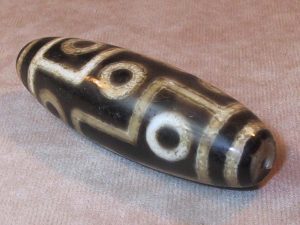
This is an authentic old tibetan 9 eye dzi:
Reputed to be the most powerful and prized of all Dzi beads, a 9-eyed Dzi is believed to be able to gather the Nine-Fold Merits & bring immense benefits & the most complete blessings. It helps gain power, glory, influence, fame & reputation. 9-eyed Dzi bead also brings windfall & speculative luck, attracts good fortune, promotes health luck, encourages growth of compassion, clears obstacles in your life journey, & offers protection against misfortunes & negativities.
About three to four thousand years ago, a meteor from Mars crashed into the Himalayas. This led to the 14 different types of Mars elements in Dzi beads, with the element ytterbium possessing the strongest magnetic field. This is what gave rise to the mystic power of Dzi beads. Wearing Dzi beads in the long run can enhance our blood circulation and metabolism. It also improves our quality of sleep, revitalizes our body and balances foreign magnetic fields which may be harmful to us.
Patterns on Dzi beads reflect Brahmanic teaching of ancient India, and are symbolic of the “wulunfajieta” beliefs. Each pattern bears a different meaning. Yet they are somewhat similar to the Taoist beliefs of Yin & Yang and the 5 elements as the fundamentals of life. Hence from the geomancy point of view, Dzi beads can improve one’s luck and help to ease problems and worries. The five-element system views the human body as a microcosm of the universe with the tides of energy and emotions waxing and waning. These energies and emotions are stored in the visceral organs and move through specific pathways or meridians in the body in a regular and cyclical fashion.
When these energies or emotions become blocked, or deficient or excessive through stress, trauma or disease, the five-element practitioner may use carefully controlled pressure on certain meridian points to help move the energy or emotions. This restores the natural cycle of energy and emotional movement, thus helping the person’s natural ability to heal.
There are five elements that operate to provide balance and structure to not only the world, but also our lives and bodies. These five elements are water, fire, metal, earth and wood. The philosophy behind the five elements and their use for healing purposes is that everything in the world is made up of a combination of them. Due to this interconnectivity, each and everything has certain characteristics that are linked to the elements. We can look at the body and how it ties into the elements and the way it works. The liver and the gall bladder are linked to the wood element, small intestines and the heart are connected to the fire element, spleen and the stomach to the earth, lungs and large intestine to metal and finally kidneys and bladder to the water element.
When a large portion of the bead breaks off the Dzi stone bead is seen as being finished with its work. It is time for the bead to be retired and allowed to rest as its reward for all of the work it has done. To tell whether the bead qualifies to be considered broken, check to see if any portion of the bead’s symbols, lines, eyes, etc. have been broken into. If the bead’s symbols have been broken it is considered broken. If the symbols are in tact it is considered still viable. The same applies for any crystal or gem stone. Usually the ‘broken’ stone is returned to the earth. Be grateful and give thanks for the work it has done.
Supply and demand
Due to the unknown origin and high demand of the beads, there has been unquestionable counterfeiting in Asia. Some are replicas created for decorative purposes, and accepted by the general public. In Chinese culture, a necklace is believed to be genuine if it was obtained without monetary exchange, for example from a temple. The other cultural requirement is that one should not request or bribe for it.
The pattern on the Dzi bead may not look exactly the same as in the pictures but will retain its main symbol and representation.
The Tibetan Dzi has been cleansed of negative energy, however it is suggested that
- Tibetan Dzi – 1 Eye
- Tibetan Dzi – 2 Eyes Dzi
- Tibetan Dzi – 3 Eyes Dzi
- Tibetan Dzi – 5 Eyes Dzi
- Tibetan Dzi – 6 Eyes Dzi
- Tibetan Dzi – 7 Eyes Dzi
- Tibetan Dzi – 8 Eyes Dzi
- Tibetan Dzi – 9 Eyes Dzi
- Tibetan Dzi – 10 Eyes Dzi
- Tibetan Dzi – 11 Eyes Dzi
- Tibetan Dzi – 12 Dyes Dzi
- Tibetan Dzi – 13 Eyes Dzi
- Tibetan Dzi – 9 Eyes Dzi
- Tibetan Dzi – 15 Eyes Dzi
- Tibetan Dzi – Diamond Eye Dzi
- Tibetan Dzi – 17 Eyes Dzi
- Tibetan Dzi – 18 Eyes Dzi
- Tibetan Dzi – 19 Eyes Dzi
- Tibetan Dzi – 20 Eyes Dzi
- Tibetan Dzi – 81 Eyes Dzi
- Tibetan Dzi – 99 Eyes Dzi
- Tibetan Dzi – Tiger Tooth Dzi
- Tibetan Dzi – Sau Dzi – Fortune and Longevity
- Tibetan Dzi – Ruyi Dzi
- Tibetan Dzi – Medicine Dzi Beads
- Tibetan Dzi – Lotus Flower Dzi
- Tibetan Dzi – Lightning Dzi
- Tibetan Dzi – Kuan Yin Dzi
- Tibetan Dzi – Heavan and Earth Dzi
- Tibetan Dzi – Garuda Dzi
- Tibetan Dzi – Bat Dzi
- Tibetan Dzi – Dorje Dzi
- Tibetan Dzi – Bodhi Dzi
- Tibetan Dzi – Bandedor Striped Dzi
- Tibetan Dzi – Diamond Eye Dzi

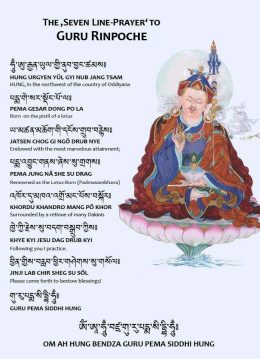

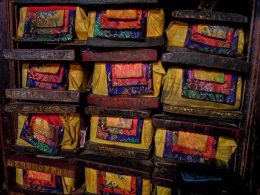
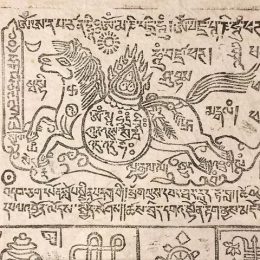
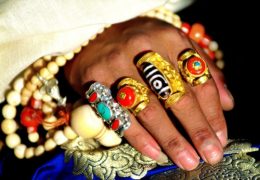
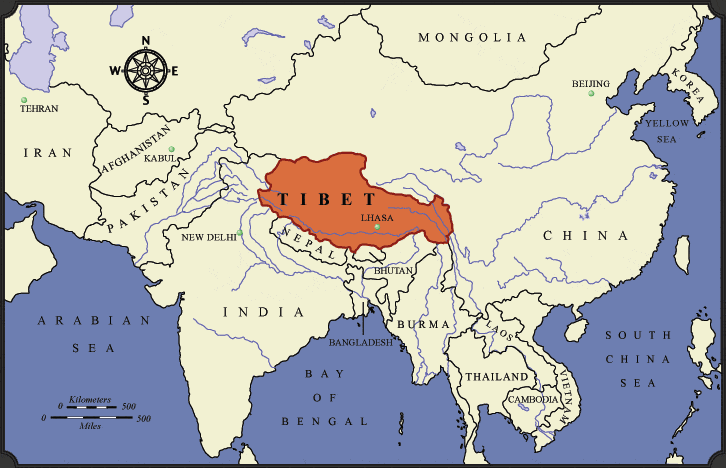
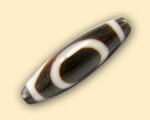
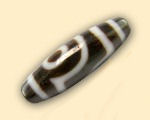
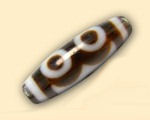
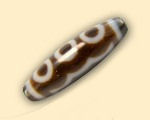
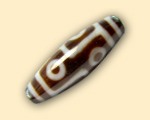
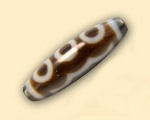
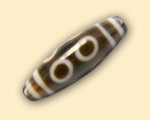
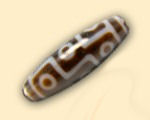
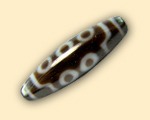
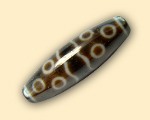
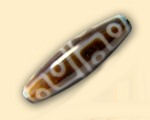
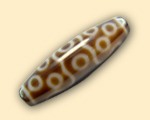

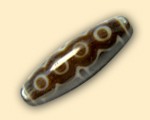
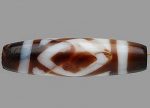

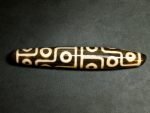

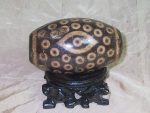
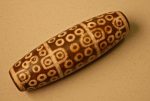
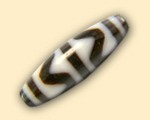
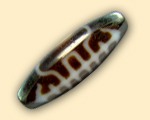
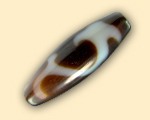
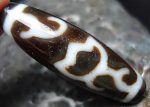

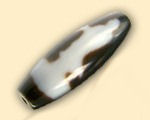
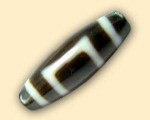
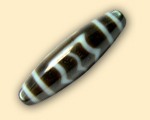
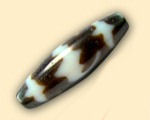
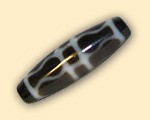
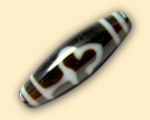
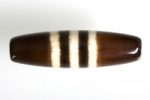
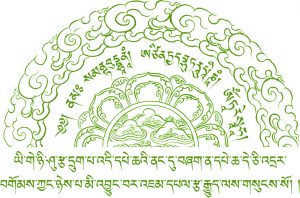
 Cintamani - Meditação e Arte - Copyright 2020 - Todos os direitos reservados.
Cintamani - Meditação e Arte - Copyright 2020 - Todos os direitos reservados.